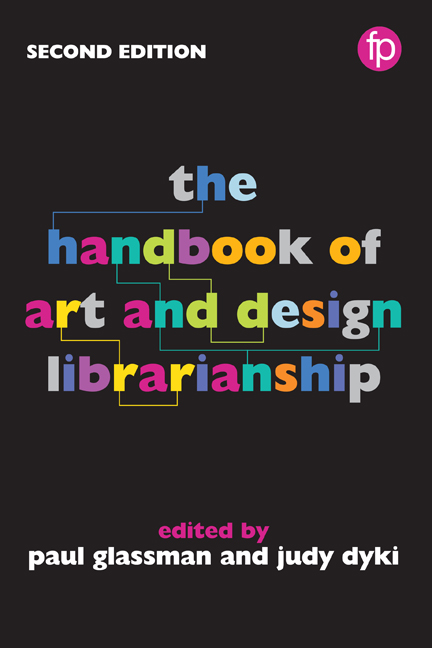Book contents
- Frontmatter
- Contents
- List of figures and tables
- Notes on contributors
- Foreword
- Preface
- Part I Roles and responsibilities
- Part II Materials and collection management
- Part III Teaching and learning
- Part IV Knowledge creation
- Part V The physical environment
- Part VI Promotion and sustainability
- Appendix Library profiles
- Index
Part V - The physical environment
Published online by Cambridge University Press: 08 June 2018
- Frontmatter
- Contents
- List of figures and tables
- Notes on contributors
- Foreword
- Preface
- Part I Roles and responsibilities
- Part II Materials and collection management
- Part III Teaching and learning
- Part IV Knowledge creation
- Part V The physical environment
- Part VI Promotion and sustainability
- Appendix Library profiles
- Index
Summary
As the virtual library becomes increasingly imaginable, many libraries are assessing the value of their physical spaces to determine how they can be allocated for optimal use. The space may be even more central to the mission of art and design libraries, since art and design students and faculty presumably bring a visual sensibility and environmental awareness to their engagement with the library. Browsing through print materials is an activity that requires the physical library, and it endures as an important activity for art and design library users, who appreciate the potential for serendipitous discovery, inspiration, and understanding that open-ended searching offers. Although many databases and online resources offer browsing modes, leafing through print publications remains a critical step in the design and ideation process. Libraries have also begun to understand the value of the library as place – as a destination for users seeking an environment conducive to study, contemplation and the exchange of information. Beyond those activities, dedicated classroom space for user education is more frequently a planning priority, as accrediting agencies encourage information literacy as a campus - wide learning outcome. The utopian condition for the library stems from its essential nature as a third place, an academic town square, a neutral zone that enables dialogue, and a space that nurtures productivity.
- Type
- Chapter
- Information
- The Handbook of Art and Design Librarianship , pp. 261 - 262Publisher: FacetPrint publication year: 2017



